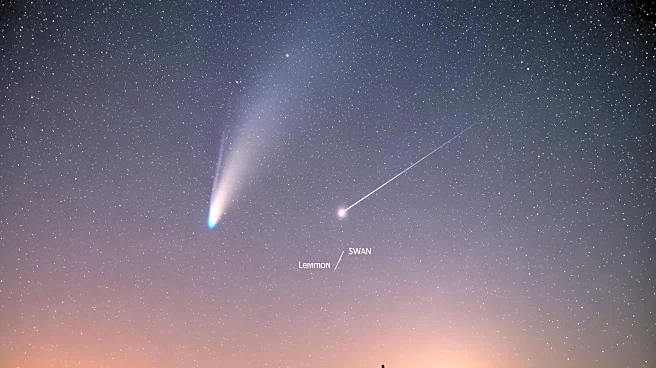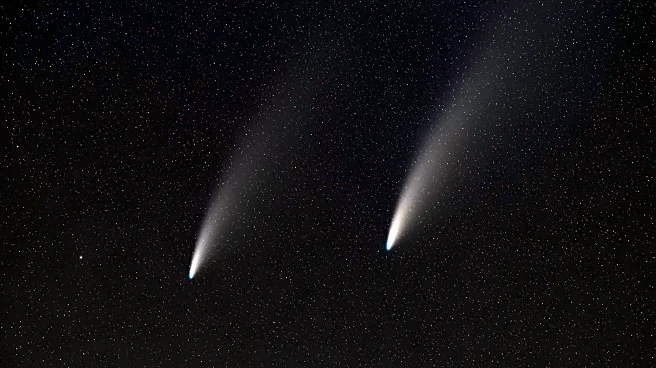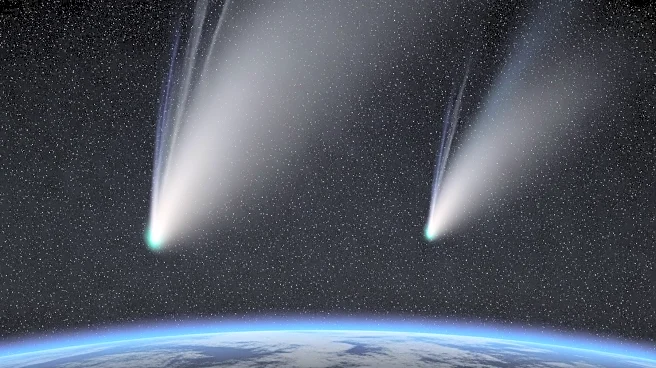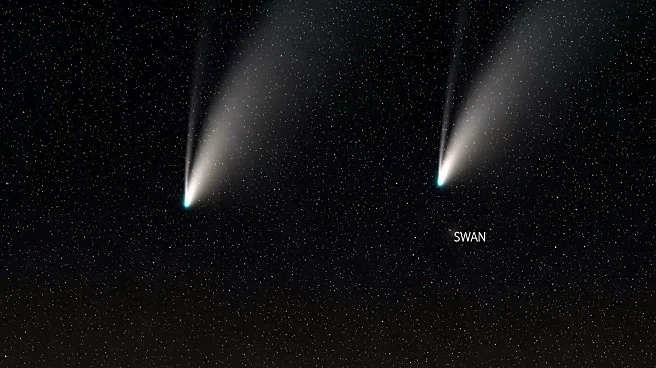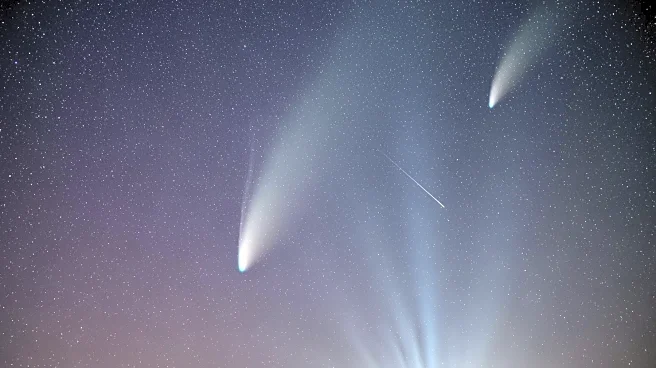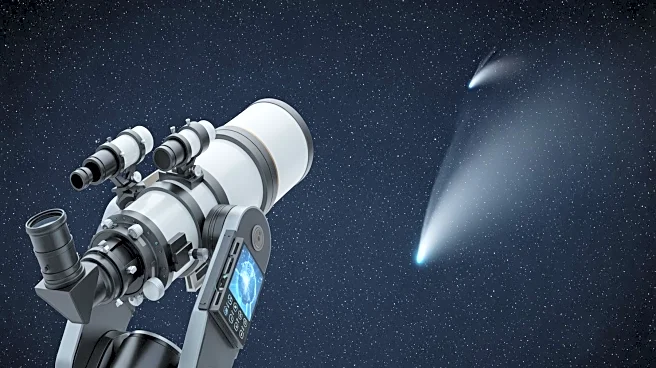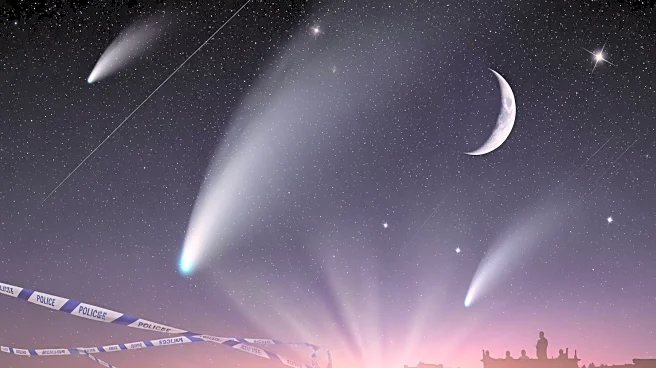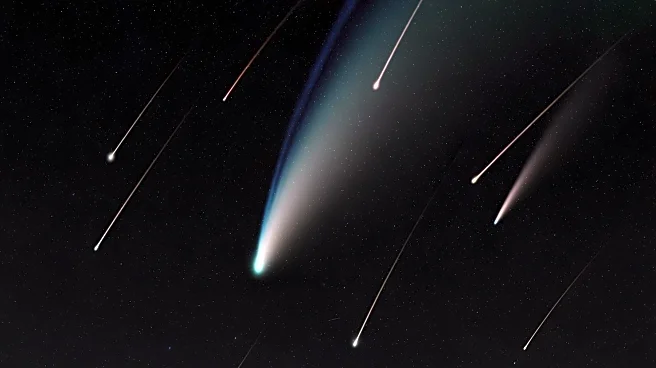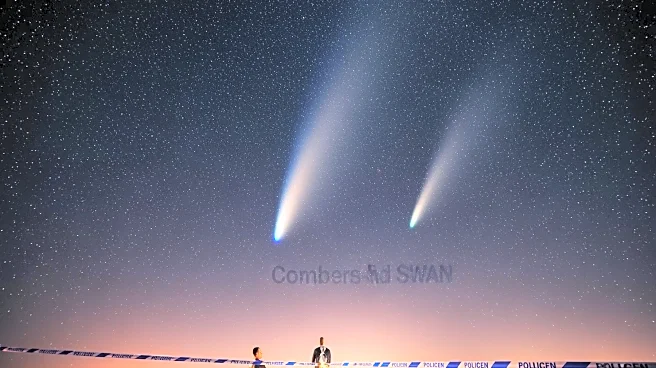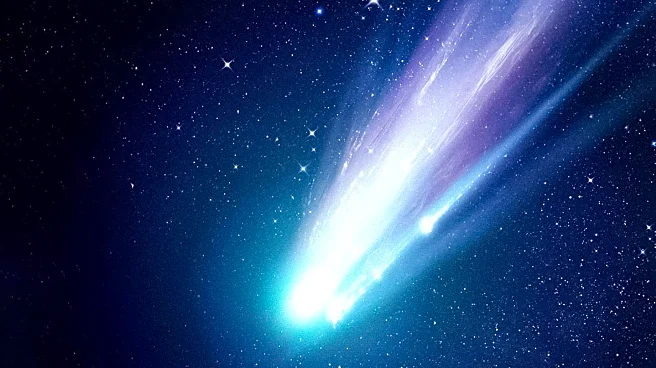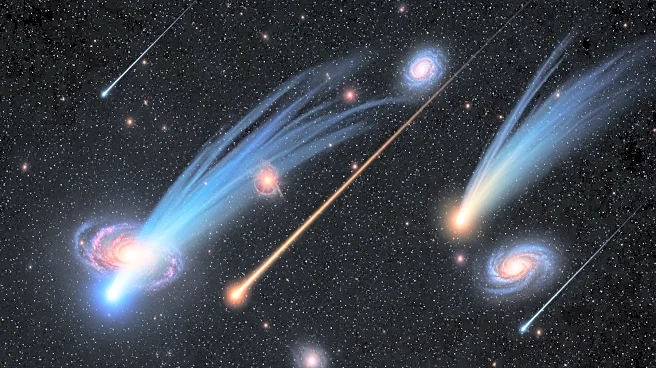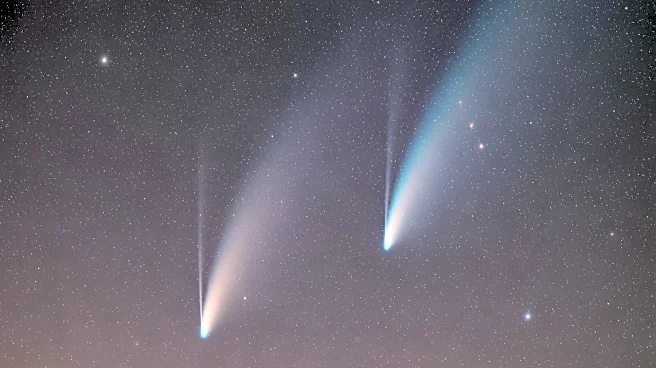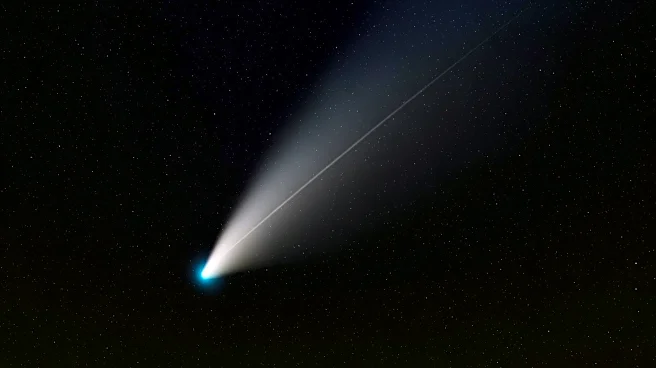What's Happening?
Two comets, C/2025 A4 (Lemmon) and C/2025 R2 (SWAN), are making a rare appearance in the night sky, reaching their peak brightness on October 21, 2025. Comet Lemmon, discovered at the Mount Lemmon Survey in Arizona, is noted for its distinctive green
hue, visible due to the sun's effect on its icy composition. It will pass approximately 56 million miles from Earth. Comet SWAN, slightly closer at 24 million miles, will also be visible, though it may require binoculars or a telescope for optimal viewing. Both comets will remain visible through October and into November, with Lemmon visible until November 3 and SWAN throughout the month.
Why It's Important?
The simultaneous visibility of two comets is a rare astronomical event, offering a unique opportunity for both amateur and professional astronomers to observe and study these celestial bodies. This event highlights the dynamic nature of our solar system and provides a chance for educational outreach and public engagement in astronomy. The visibility of these comets can inspire interest in space science and encourage people to learn more about the universe. Additionally, such events can boost local tourism in areas with optimal viewing conditions, as enthusiasts travel to witness the spectacle.
What's Next?
Stargazers are encouraged to find locations with minimal light pollution to maximize their viewing experience. The comets will continue to be visible in the night sky, with Comet Lemmon expected to be most visible in the northwest sky after sunset, and Comet SWAN best seen in the southwest sky. As the comets move, they will provide ongoing opportunities for observation and photography. The public can also participate in online livestreams hosted by platforms like Space.com and the Virtual Telescope Project, offering broader access to this celestial event.
